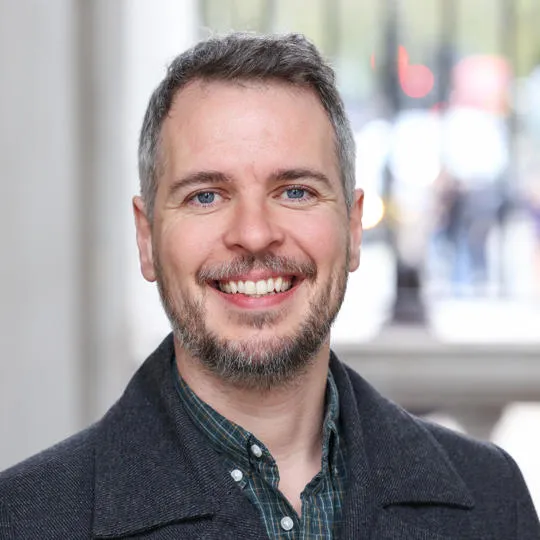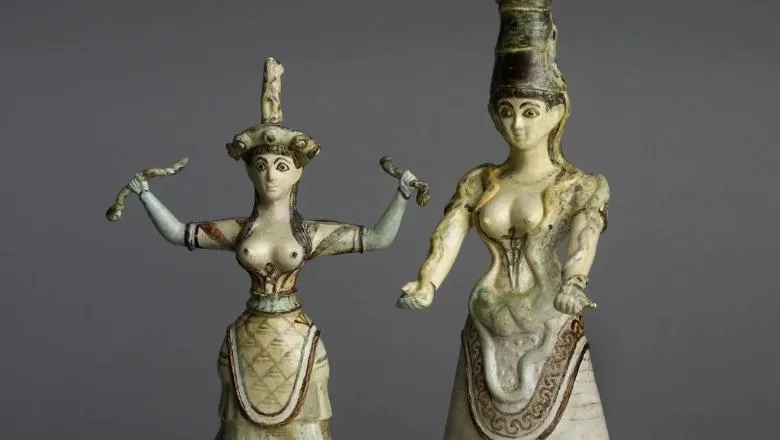Visual media can play a dominant role in shaping our understanding of politics – sometimes without us even noticing. In this Spotlight on Arts & Humanities, Dr Daniel Mandur Thomaz, Senior Lecturer in Brazilian and Latin American Studies, showcases how workshops helped school children in Brazil recognise how propaganda has shaped the country’s perceptions of political messaging today.
Through The Spectacle of Propaganda, Dr Mandur Thomaz investigates how visual media was used in the Cold War to influence public opinion in Brazil. His research examines the US distributed propaganda under the Truman administration, which aimed to counter Soviet messaging and the global increase in “anti-American sentiment” during the Korean War.
After World War II, Brazil was regarded as a key regional power in Latin America by US policymakers and was a major supplier of essential commodities and strategic minerals to the US. This was also a period marked by labour unrest and early Cold War anxieties regarding the spread of socialist ideas among labour movements. Although not an immediate threat for Soviet expansion, it nonetheless became a target of US information campaigns.
During his research, Dr Mandur Thomaz came across a private archive of images by Alan Fisher showing the widespread use of US visuals and media in Brazil. Fisher, a US photographer, was hired by the Office of the Coordinator of Inter-American Affairs (OCIAA) and the US State Department to work in Brazil in the 1940s and 1950s. His previously unseen photographs offer extraordinary insight into how ideological messaging was shared and received.
Most scholarship on US propaganda and information warfare in Brazil and Latin America more broadly has concentrated on policy-level analyses rather than audience reception. This is precisely why Fisher’s images are so important – they reveal the other end of these campaigns and offer rare visual documentation and insight into how they were received by the public.
Dr Daniel Mandur Thomaz, Senior Lecturer in Brazilian and Latin American Studies
Propaganda as spectacle
As technology advanced, methods for sharing propaganda became more sophisticated. Mobile film screenings for workers and their children shared audiovisual propaganda material – newsreels, cartoons and short educational films – in schools, factories and rural villages, all for free.
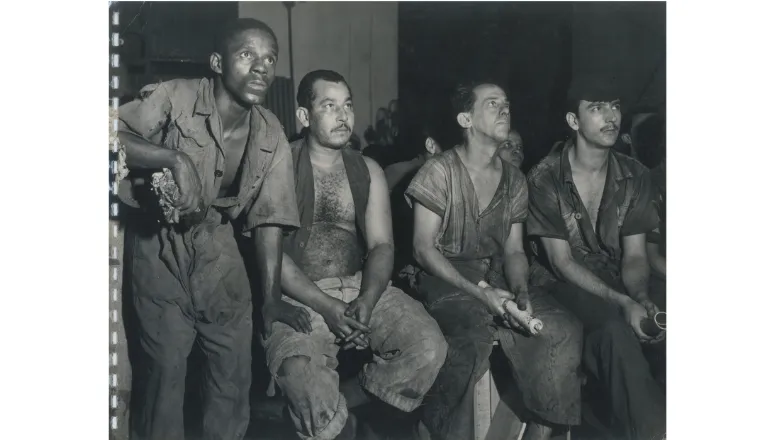
Dr Mandur Thomaz proposes a theoretical framework for analysing these efforts: the notion of propaganda-spectacle. He argues that the success of the screenings was not solely due to the content of the films, but also due to the performative nature of the events. The logistics required to bring these screenings to remote rural villages – some of which lacked electricity or basic infrastructure – as well as to factories and schools, were impressive to the Brazilian public. The campaigns project US modernity on the screen, but also perform it through the display of wealth, infrastructure, logistics and technology that made the screenings possible.
In this sense, propaganda-spectacle is a genre of persuasive communication that assumes the form of a political-performative event. Due to its performative dimension, these events extend beyond what is being said or seen, incorporating not only the medium – in our case, the screen – but also the apparatus and material conditions that intersect to make their realisation viable. As a liminal space between spectatorship and the performance, the spectacle becomes a strategic place for propaganda’s subterfuge.
Dr Mandur Thomaz
Fisher photographed the viewers at these screenings to report back to the US Information Service. His work reveals the granularity of the US operations and their collaborations with Brazilian authorities including the Ministry of Agriculture, Rio de Janeiro’s Department of Education, and SESI (Brazil’s Social Service for Industry).
Modern political messaging in Brazil
Using Fisher’s photographs, Dr Mandur Thomaz collaborated with Dr Thais Blank and Dr Martina Spohr from Fundação Getúlio Vargas (FGV CPDOC) in Brazil to digitise and contextualise the images in both English and Portuguese, building on FGV CPDOC’s existing initiative, Historical Sources in the Classroom.
The photos were organised into five themes:
- USIE Motion Pictures in Alvinopolis, Brazil
- Rural Brazil sees USIS Films
- Brazilian Factory Workers See USIE Films
- USIE Film Showings in Rio de Janeiro Public Schools
- Other images
With the rise of disinformation online, the project team wanted to share their research with Brazil’s young people to build their understanding of propaganda and political messaging. Today’s far-right groups are notorious for spreading disinformation and moral panic in Brazil’s schools – for example, far-right populist Jair Bolsonaro’s 2018 presidential campaign benefited from conspiracy theories related to sexual education and the influence of progressive teachers. In this context, schools have become central to contemporary political debate.
What’s striking is how many of today's political debates on conspiracy theories and propaganda echo Cold War-era narratives – including familiar “red scare” tropes – and how they are reminiscent of the campaigns Fisher was documenting. This suggests that the legacy of Cold War propaganda continues to shape political discourse in Brazil today.
Dr Mandur Thomaz
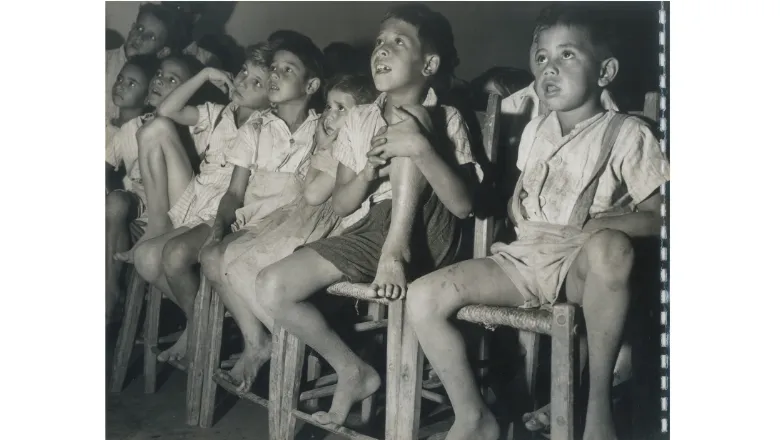
Developing school workshops
The team developed workshops for Brazilian public school teachers, supporting them to critically engage with propaganda and to consider how Cold War communications strategies linger in the digital age. They also supported teachers to co-create classroom activities exploring the history of propaganda and its relevance in the modern world.
FGV has significant experience with outreach activities in schools, but do not typically collect data on the events. Dr Mandur Thomaz designed a series of surveys to track how teachers responded to the material, how the images influenced their perceptions of propaganda, and how this could inform their conversations with students.
This data collection helped us to think about the impact of the content we worked on in the workshop and how we can improve it, which we intend to implement in future workshops... The project also inspired teachers to new ways of teaching history through the use of audiovisual media, such as the production of photos and films, and the production of exhibitions together with the students. We therefore intend to use the data collected in the workshops and the lesson plans developed by the teachers to produce articles and new research on the workshop experience.
Thais Blank, Fundação Getúlio Vargas (FGV CPDOC)

Many teachers said the workshop changed their understanding of propaganda in the Cold War by demonstrating the varied role of visual media in affecting public perception, as well as offering new perspectives on modern-day online disinformation strategies.
The legacy of language
Before the workshop, few participants associated the word ‘propaganda’ with international conflict or Cold War politics. This could stem from a language or cultural issue – in the Portuguese language, “propaganda” simply means “advertising”, leading most people to think of TV or internet advertisements, or to relate “political propaganda” to electoral campaigns.
Most people in Britain would associate propaganda with Nazi and Soviet information warfare during World War II and the Cold War. But in Brazil, a lot of meaning is lost in the Portuguese translation. In this context, discussing Cold War legacies and propaganda as a form of persuasive – and deceptive – communication becomes even more relevant to contemporary debates.
Dr Mandur Thomaz
After the workshop, 100% of participants said they had changed how they thought about the subject and would use historical examples to shape conversations in the classroom on social media, disinformation and political communication.
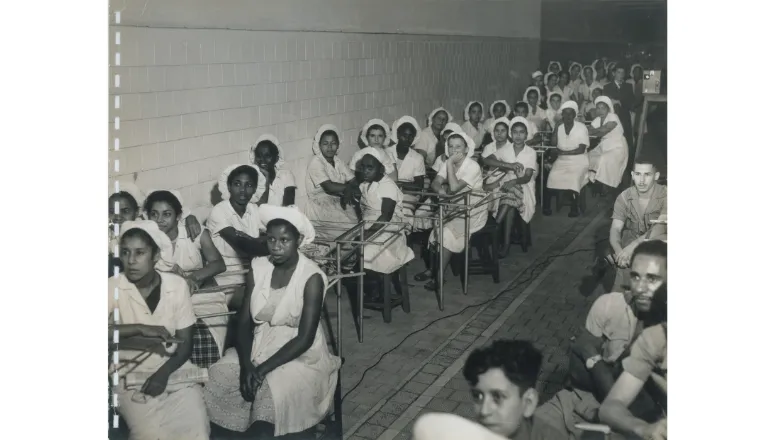
These historical examples highlight how communication strategies can be used to strengthen ideological positions, influence social groups, and manipulate narratives in times of political polarisation.
Teacher who participated in the workshop
From the new classroom activities, students will be able to question how information is presented to them, using historical examples to understand the current media landscape. They will develop the skills to consider the power of images and recognise the value of media literacy in the digital age.
The project contributed to a more nuanced understanding of propaganda, not as simple fabrication, but as a complex, culturally embedded practice of persuasion.
Dr Mandur Thomaz
This project has also laid the groundwork for further collaboration between King’s College London and FGV CPDOC, including Dr Mandur Thomaz spending a term at FGV as a visiting scholar and work to analyse the data gathered from the workshops. The Spectacle of Propaganda website remains an active resource for growing public understanding and media literacy for Brazil and the wider world, acting as an archive for educators and students alike.
The Spectacle of Propaganda was funded by the King’s Arts & Humanities Research Council Impact Acceleration Account (Rapid Response Fund).
Banner image: State school children in Rio de Janeiro watch USIS cartoons, 1951. (Image: Alan Fisher)
Second image: Brazilian factory workers watch USIS film "UN Aids the Republic of Korea", 1950. (Image: Alan Fisher)
Third image: Children in Alvinopolis, Minas Gerais, Brazil, watch USIS films, 1950. (Image: Alan Fisher)
Fourth image: Public school teachers on the workshop at FGV CPDOC, Rio de Janeiro, in March 2025.
Fifth image: Brazilian factory workers watch USIS film "UN Aids the Republic of Korea", 1950. (Image: Alan Fisher)





